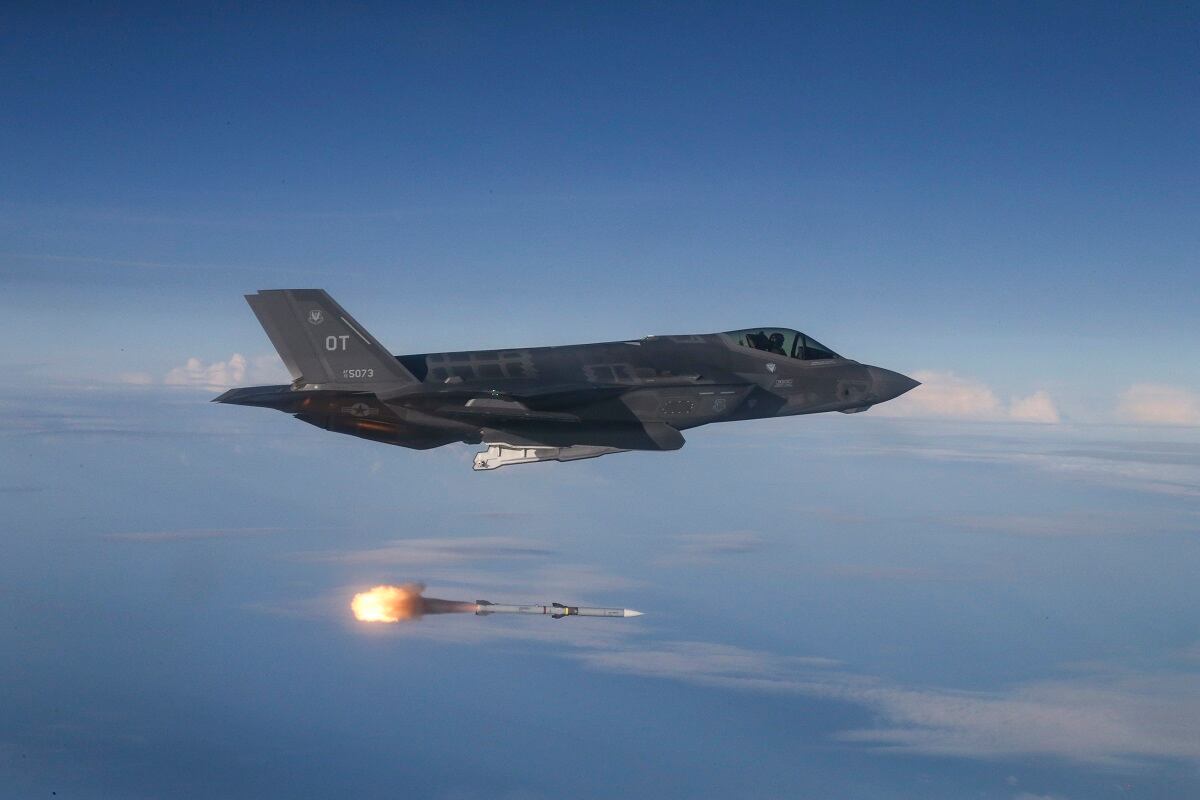ABOARD THE CARRIER ABRAHAM LINCOLN IN THE ATLANTIC OCEAN — The U.S. Navy’s carrier-launched F-35C is being integrated into the carrier air wing as it pushes toward being declared operational early next year.
Here in the Virginia Capes Operating Area, the Lincoln is launching F-35Cs side by side with the Navy’s stalwart F/A-18 Super Hornets, E-2 Hawkeyes and C-2 Greyhounds. It is the first time the naval aviation enterprise is rehearsing as a full band with its newest player.
The goal is to work out the kinks and ensure the systems work together, said Rear Adm. Dale Horan, who is leading the F-35C integration effort.
“Until you get an airplane out and mixed with other airplanes, you don’t necessarily grasp those differences," said Horan, director of Joint Strike Fighter fleet integration. “For the first two days or so, everybody was: ‘Wow, it’s F-35s!’ And now it’s: ‘Hey, those are airplanes.’
“They move around on the flight deck like a Navy airplane moves around on the flight deck. And seeing that seems to look relatively normal.”
RELATED

The F-35C, a descendant of Lockheed Martin’s X-35 that first flew in 2000, will be substantially different from its Hornet forerunners when it is officially integrated into the carrier air wing. Some of its chief virtues lie more with what it won’t be shooting rather than what it will.
Its passive sensors and target-sharing capabilities accelerate the Navy down a path it’s been forging since China and Russia became challenges to U.S. primacy in the world: moving away from large active sensors, such as the AN/SPY-1 anti-air warfare radars that are easy to detect with electronic warfare equipment, and relying more on passive sensors.
The Navy is driving toward combining the aircraft’s stealth characteristics with the ability to develop and share kill-quality target data with other aircraft — Super Hornets equipped with Advanced Medium-Range Air-to-Air Missiles, for example — or even anti-air warfare specializing cruisers and destroyers, allowing the fighter to let others do the shooting while it remains undetected.

And while electronic and cyber intrusions are ever-present concerns for the targeting network under development, the Navy’s development of missiles with ever-increasing range — such as Raytheon’s SM-6 — pushes the battlespace for the Navy’s surface shooters out to ranges that would be difficult to fathom three decades ago — the last time the U.S. had a significant geostrategic competitor.
But on this initial operational test and evaluation operation, or IOT&E, the Navy’s goals are just to make sure the thing blends with the mix of aircraft already in the air wing. The IOT&E is looking at sortie generation rates, air interdiction and strike missions, Horan said.
All this is pushing to a more formal IOT&E later this year and a February 2019 declaration of initial operational capability, a key milestone that says the aircraft is ready to be deployed in some form or fashion. The early 2019 IOC date was initially spelled out in a 2013 report to Congress.
There are still some hang-ups, although Navy officials refused to discuss test results with reporters embarked here for the day.
The F-35’s high-tech helmet is limiting night-flight operations due to an issue with the display that creates a green glow on the screen, which makes it hard for pilots to see the carrier’s deck lights. The issue is that the brightness of the LED display can’t get down low enough to avoid creating a glow when it’s pitch black outside.
The Navy says it’s close to fixing the issue with a new kind of LED display, known as organic LED, which will be fielded next year, Horan said. For now, the Navy is limiting nighttime deck landings to pilots with more than 50 night traps, a term for an arrested landing at night.
“Until we get that, we are not letting inexperienced pilots approach the carrier [at night],” Horan said. “Modifications have been made to the software to impact how much glow it gets, but even with that they are still having to compensate for it in the cockpit — something that an experienced pilot can do, but a junior pilot can’t.”
David B. Larter was the naval warfare reporter for Defense News.







